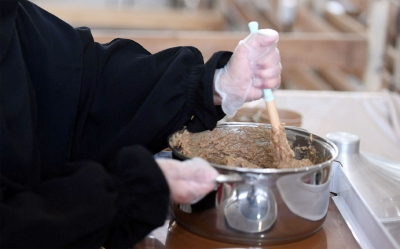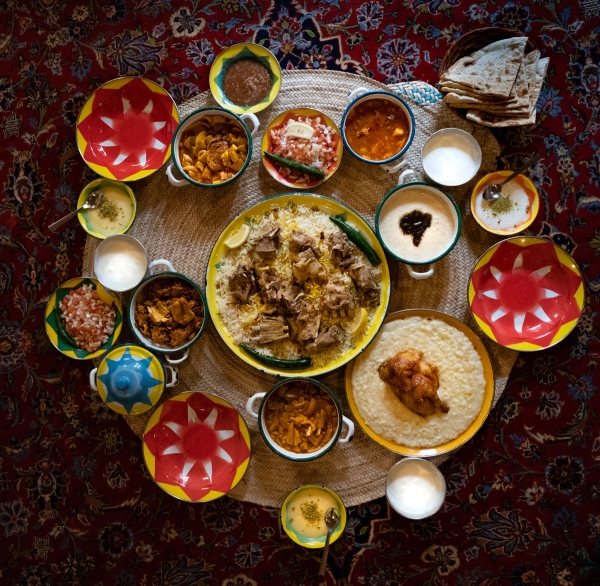
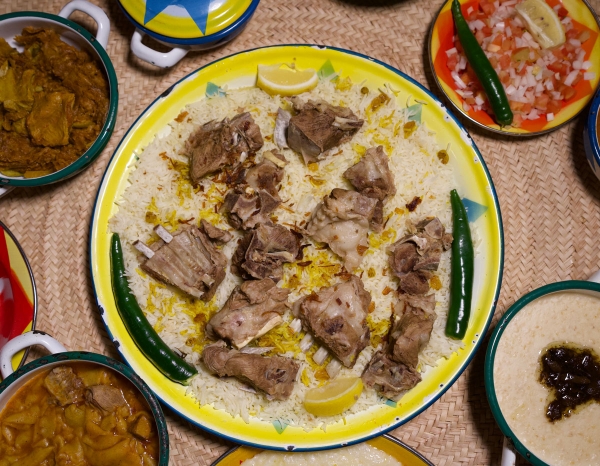
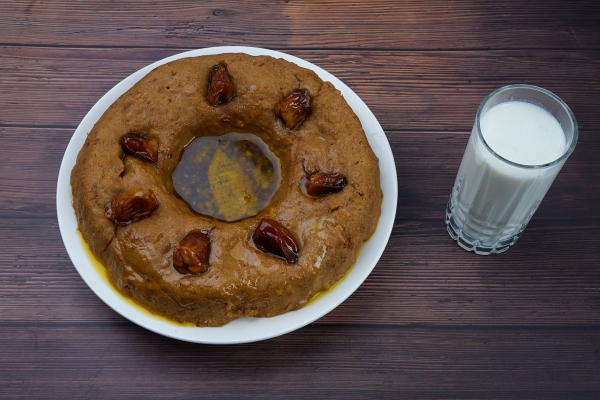
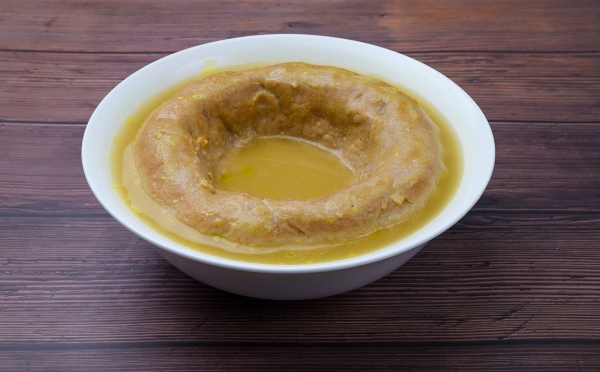
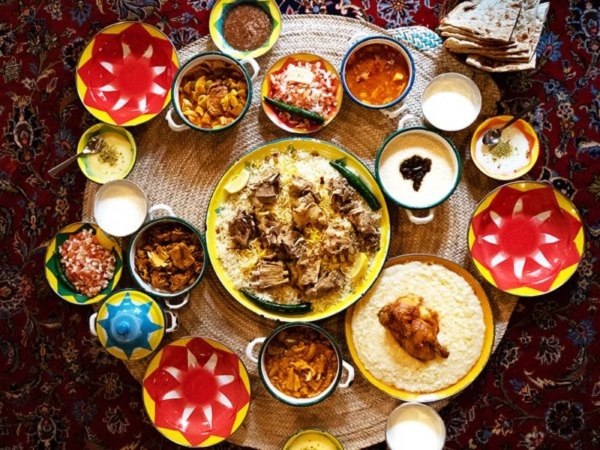
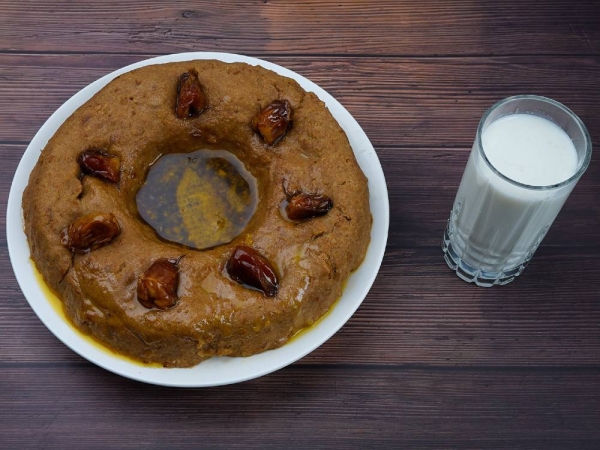
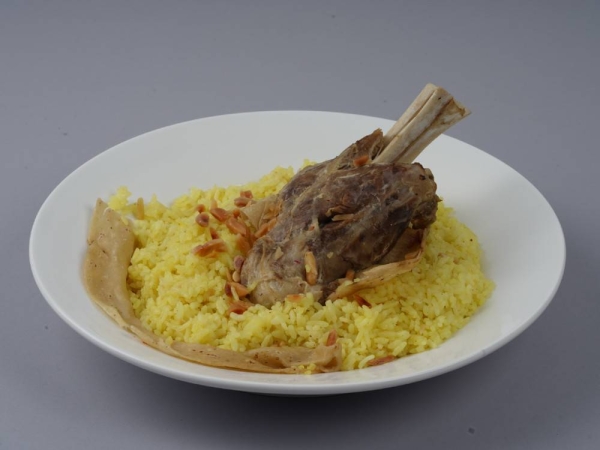
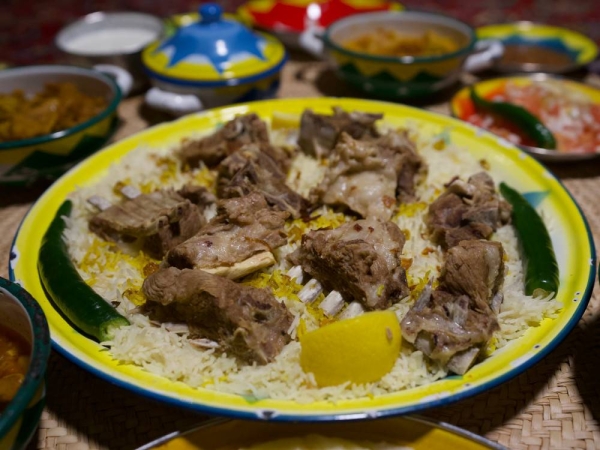
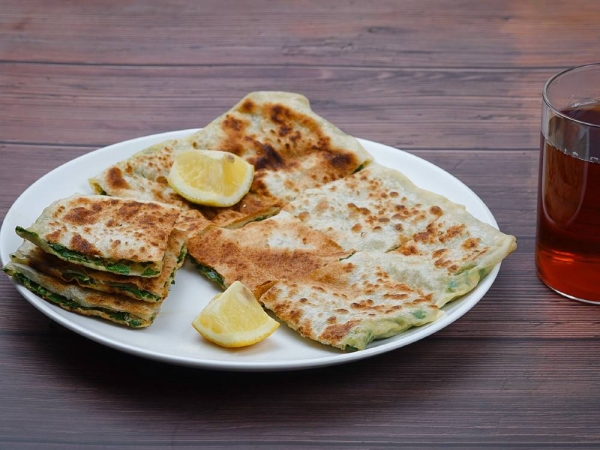
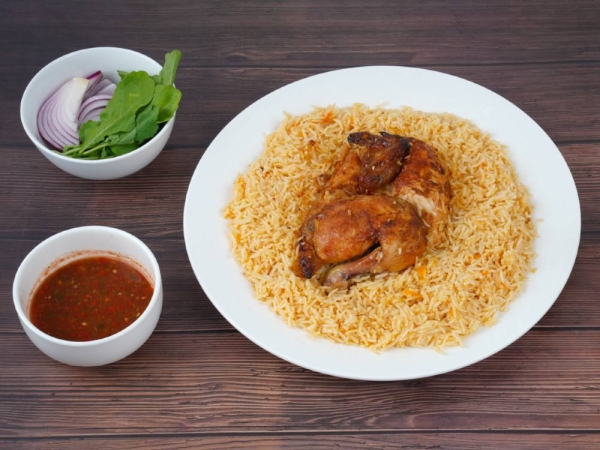
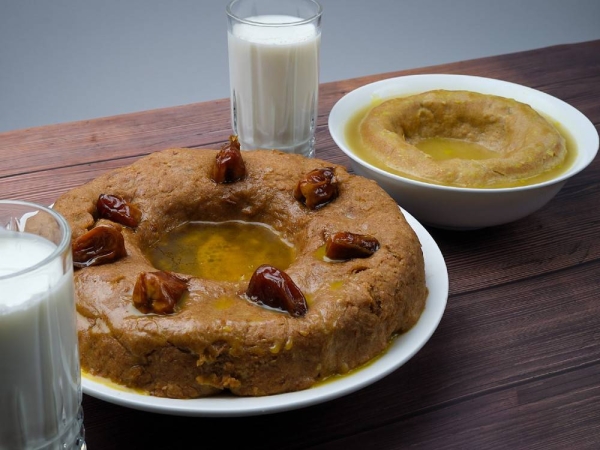
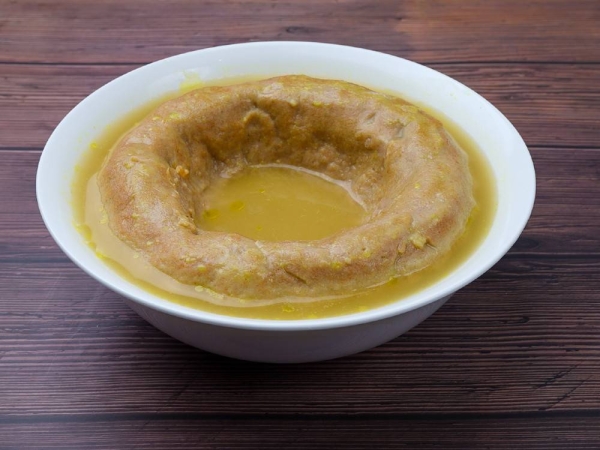
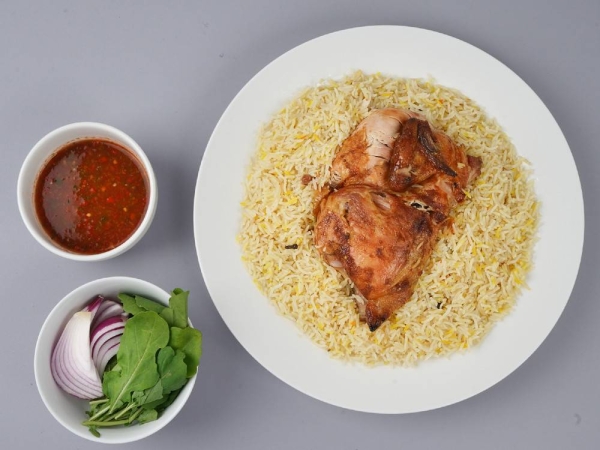
Saudi Cuisine is a diverse culinary tradition that reflects aspects of the living history in the Kingdom of Saudi Arabia and the cooking techniques that have been developed over time. It is a major part of Saudi cultural heritage.
The diversity of provinces in Saudi Arabia and the variety of its cultures have resulted in a mix of different culinary contributions. Some Saudi dishes represent a fusion cuisine that reflects the Gulf or Arab culinary styles at times.
The abundance of agricultural crops in Saudi Arabia contributes to the innovation of dishes and the determination of ingredients, spices, herbs, and specific cooking styles. Among the most famous are dates, barley, whole wheat flour, and millet.
Historical overview of Saudi cuisine
Saudi cuisine is generally characterized by its simplicity, featuring many dishes that consist of between two and four main ingredients. The cuisine primarily relies on the quality of the ingredients rather than sophisticated preparation. The Saudis used several cooking methods in early Saudi cuisine, which were combined with other Arabic cooking techniques, thus forming the basis of the current Saudi cuisine. The Kingdom's location, adjacent to many Arab countries, follows diversified food preparation methods that align with the country's local culture.
In Saudi eating culture, everyone gathers around a single serving dish while sitting on the floor. They eat with their right hand one of the main courses. One should eat from the section of the dish directly in front of them. The host or person who prepared the meal assists the group by cutting the meat and bringing it closer to them, ensuring food is abundant in the dish. In some provinces, certain food items that are mashed or packed together are eaten with three fingers, such as Mathloutha, Aseeda, Areeka, Mashghoothah, and Khameer. The Saudi Kabsa dish is traditionally eaten with five fingers.
Saudi eating traditions
According to Islamic law (Sharia), a specific method must be followed when slaughtering animals to make them permissible or halal for consumption. Additionally, Islamic law prescribes certain etiquettes before eating, during the meal, and upon finishing. These include starting with the invocation "Bismillah" (In the name of Allah) and ending with praise "Alhamdulillah" (Praise be to Allah). These phrases express gratitude to Allah as the creator of the food provided for consumption. Furthermore, alongside the word for food, the term "Ni'mah" (blessing) is often used to refer to food, which is a more grateful way of naming the meal.
Recognized Saudi dish and the national dessert
In conjunction with the initiative "National and Regional Dishes Narratives," which aims to compile and classify local dishes in all provinces of Saudi Arabia, the Culinary Arts Commission adopted the "Jareesh" dish, also known as the "Master of Dishes" as a national dish for Saudi Arabia. This is because it is a staple meal in Saudi society and has been known for a long time. It is mentioned in Arab heritage books that women in the Arabian Peninsula used a coarse grinder to manually grind wheat into coarse grains, and "Jareesh". "Maqshush," a Saudi national dessert. It was mentioned in history from the period of 1823 to the period of 1891. It was considered one of the traditional foods in the heart of the Arabian Peninsula. Its preparation is associated with cold weather and rainfall. It consists of small loaves made from wheat flour, to which clarified butter with honey, sugar, or date syrup is added. It is served as a breakfast dish and also accompanies coffee or tea.
The commission selected "Marqouq" as a regional dish for Riyadh Province, while "Saleeq" was chosen for Makkah al-Mukarramah Province, "Madini Rice" for al-Madinah al-Munawwarah, and "Mulayhiya " for the Northern Borders Province. "Al-Bukayla" was chosen for al-Jawf Province, "Muqana Bread" for al-Bahah Province, "Hail's Keubaibat" for
Impact of weather on Saudi cuisine
The changing seasons and varying conditions of the weather and environment, and the amount of daylight across the Kingdom's provinces affect the diversity of cuisine. Foods based on grains, milk, and broth, such as Jareesh, Salig, and Maadous, are common in winter because they energize and warm the body hours after their consumption. In the same seasonal period, almond coffee or Sahlab is served in the western region. Some seasonal crops, such as desert truffles, locally known as 'al-Faq'a', are added to various Saudi dishes, most commonly the Matareya dish in the Northern Borders Province.
Traditional food using primitive tools
The preparation of folk cuisine in Saudi Arabia is associated with traditional and somewhat complicated tools. However, they are currently replaced by more robust and fast electrical appliances, designed especially for difficult-to-prepare dishes, such as the Aseeda dish. These appliances are available in local commercial markets, although heritage enthusiasts stick to the traditional preparation style and use old tools, such as the mortar to mash legumes and fruits, as well as the Mihmas in which coffee is roasted. In the southern regions, traditional southern bread is prepared in a hollow stone bowl called Mifa or Tanoor. Traditional food is also served in the Mudahhan, a locally made stone vessel famous in Najran Province.
Food associated with place and time
In the societal culture, some non-traditional dishes, most specifically desserts, have gained fame due to a specific ingredient, its exporter, or its timeline. For example, the Eastern Province is associated with Aramco cake, which Aramco provided during the 1990s in the shops of its residential district.
Main dishes in Saudi cuisine
Similar to global cuisines, there are three main meals in Saudi cuisine: Breakfast varies from one province to another in terms of the type of food, but coffee and milk are commonly present on the table across provinces. Sometimes, breakfast and dinner may include similar items like cheeses, olives, and bread. In local parlance, this group of foods is commonly referred to as 'Nawashef' or 'Mo'aajanat'.
The Saudi Kabsa is at the forefront of Saudi Arabia's traditional dishes and consists mainly of rice mixed with meat or chicken. It is also the most diverse traditional dish in terms of cooking method, spices, and presentation. Although it is the easiest dish to prepare, as all its ingredients are cooked or pressed in one pot, it reveals the chef's level of experience in mastering the seasoning and determining how well the meat or vegetables are cooked.
Dishes of the Northern Province
As we move northward in Saudi Arabia, rich dishes become more prevalent due to the lower temperatures, starting with Hail Province, which is renowned for its calorie-rich dishes such as Qushda, Aseeda, Jareesha, Hareesa,Matazeez, and Hail's Keubaibat. Dates are also integrated into many dishes like Haneeny, Raghfan, and Maqshoosh. The similarity between the Northern Borders Province and Hail Province is observed in many dishes, except with al-Malihiya, al-Khumai'a, al-Futaita, and Mahmousa famous in Arar City.
In Tabuk Province, Mansaf, which consists of meat, rice, and Shrak bread, is one of the popular dishes that depend on one of the varieties of yogurt, which is Jameed or Iqt. One of the most popular dishes in Hail City that can be eaten at lunch and dinner is Timman, a type of rice. It is cooked with meat, vegetables, and squash. Moreover, the hand-made Mathan bread on the Saj, as well as the Arbud bread, which is baked under embers, are among the most important ingredients of al-Jawf feast.
In al-Jawf Province, which is unique for its opophytum plant that adorns its desert during 'al-Wasm,' the delicious 'al-Bukayla' sweet is made. This dish is one of the most famous traditional foods in al-Jawf Province. It consists of the opophytum that grows in the rainy season and can be prepared with date paste and syrup instead of whole dates and is served cold in a serving dish.
Dishes of the southern regions
The southern and southwestern regions of Saudi Arabia are renowned for their cuisine, which predominantly features wheat as the abundant crop in their agricultural lands. In particular, wheat flour is a prominent ingredient in the cuisine of Aseer Province. Generally, it is a key ingredient of most traditional dishes in Najran Province, such as: al-Raqsh, al-Mardufah, al-Wefd, al-Madhan, and the traditional bread loaf, locally known as 'Qurs' or 'Qa'noon' The names of dishes vary along the southern coast, including Khameer, Moarak, Areeka, Radifa, Aseeda, Mifa bread, and Daghabis.
The plains of Aseer are distinguished by the dishes 'al-Shidakh' and 'al-Regla'; both are local vegetables served as side dishes, eaten with 'al-Meefa' bread. There is also the dish 'al-Tasabee' prepared from milk and cooked flour, 'al-Mashghootha', and 'al-Malla'. In Jazan Province, the dish 'al-Marsah' and 'Meat Maghsh' are well-known, along with the dish 'Mafalet,' which was traditionally a staple meal for Suhur.
Aseer: World Region of Gastronomy 2024
On June 13, 2022, the International Institute of Gastronomy, Culture, Arts, and Tourism (IGCAT) announced that Aseer Province won the World Region of Gastronomy 2024, as the first non-European country to hold the title. Entities, associations, and ministries participated in this achievement, including the Culinary Arts Commission, Aseer Development Authority, Soudah Development Company, Heritage Commission, Saudi Tourism Authority, King Khalid University, Saudi Tourism Association, Saudi Heritage Preservation Society, Ministry of Education, and Ministry of Environment, Water and Agriculture.
Dishes of the Eastern Province
The Eastern Province is home to one of the largest coasts, which contributes to the diversity of fresh seafood in the province. While seafood preparation in Jeddah Governorate adopts a modern preparation style and is mostly limited to shrimps and prawns, the Eastern Province adheres to the traditional methods of preparing seafood, such as Muhammar Barnyush, which is famous among sailors in winter, and is based on rice cooked with sugar and fried fish, and Matban fish, which is based on large fish, such as the grouper and the kingfish.
Marqooq and Matazeez are both prepared in the Eastern Province and the central regions, but the preparation method varies. Moreover, al-Mandi al-Hasawi dish, al-Hasawi rice, and red bread are popular in al-Ahsa City. Al-Mahmouss al-Qatifi is famous in al-Qatif City. It is a historical dish and consists of rice and toasted onions. Meat, fish, and chicken can also be added.
Dishes of the western regions
The western regions can be described as the most culturally integrated area in Saudi cuisine due to the longstanding commercial activity there. Makkah al-Mukarramah and Jeddah cities are particularly notable for dishes that are associated with poetic chants used by vendors to market their foods.
In the western region, ovens and bakeries specializing in preparing 'Tamees' bread are widespread, which is served alongside a dish of beans. 'Balila,' also known as 'Hejazi Balila,' has become widely popular in the Makkah al-Mukarramah Province. Its preparation relies on a single ingredient, chickpeas soaked overnight. Al-Madinah al-Munawwarah City is known for Bukhari and Kabili rice, while the western region in general is distinguished by a variety of sweets, especially Debyazah sweets.
Dishes of the central region
Both Riyadh and Qassim provinces share many dishes characterized by their broth-based cooking, such as the Qursan, Marqooq, Thareed with meat, and Haneeni. Qassim Province, known as the host of the largest date palm farm in the world, specializes in preparing various dishes that incorporate dates, such as 'Klija', for which Qassim is a local and Gulf source, as well as 'Haneeni' and 'Qashd'.
Al-Masabib is one of the traditional dishes of Riyadh Province and one of the oldest dessert dishes. It is made from whole wheat flour, honey, and ghee. In Qassim Province, 'Qurs al-Uqaili' is considered one of the best-sweetened foods, named after men from Qassim Province called 'al-Aqeelat' who would take it with them on their journeys to the Levant, Iraq, and Sudan.
Ramadan meals
Iftar is the first meal eaten by a fasting person during Ramadan, starting directly with the Maghrib prayer, while Suhur is the last meal to be eaten before fasting again. It starts after midnight until before the call to Fajr Prayer.
For the iftar meal, fasting people typically consume dates and water, yogurt, or juices, then perform the Maghrib prayer. After completing it, the rest of the traditional and popular dishes for Ramadan are prepared and served, such as grain soup, Lukaimat, Sambousa, and berry juice. Suhur meal begins in the last third part of the night. The fasting person can choose to eat the Suhur at an earlier time if they wish. However, Suhur is often delayed until before dawn. According to the food culture in each province of Saudi Arabia, Suhur meals often vary.
Islamic holiday meals
Despite the diversity of provinces in Saudi Arabia, Saudis are keen on preserving traditional customs known from ancient times, one of the most important being 'Eid breakfast.' Families take charge of preparing it and excel in the way it is presented. Dishes on the Eid breakfast spread include al-Ta'teemah, Jareesh, liver, and Kleicha, as well as rice dishes with meat.
Beverages in Saudi Arabia
Some beverages in the Kingdom are associated with symbolic events in Saudi culture and play a major role in hospitality and lifestyle. Drinks are diverse and can include regular drinking water, milk, yogurt, coffee, tea, juices, soft drinks, and hot beverages, which are the most prevalent. Moreover, a group of Saudis is interested in drinking the milk of sheep and camels.
Saudi coffee
In the Saudi poetic heritage, coffee is referred to as kaif and is a cultural heritage related to the history of Saudi Arabia in terms of customs, traditions, and values of generosity and hospitality. It is also the first step of the official hospitality protocol when receiving foreign delegations and heads of state in Saudi Arabia. Saudi Coffee is prepared with two main ingredients: coffee beans and cardamom, with the possibility of adding aromatic spices, such as ginger, saffron, cloves, and ajowan. In 2015, Saudi coffee was registered in the UNESCO Representative List of the Intangible Cultural Heritage of Humanity, as a common element between Saudi Arabia and several Gulf countries: the United Arab Emirates, the State of Qatar, and the Sultanate of Oman.
Qishr coffee
Qishr Coffee, also known locally as sweet coffee, is one of the traditional beverages in the Southern Province of the Kingdom. Coffee peels refer to the outer husk of coffee beans. Coffee is prepared using two main ingredients: coffee husks and hot water, with the possibility of adding some aromatic spices, such as cinnamon and cardamom. Qishr coffee is useful for weight loss and for some medical cases. Coffee beans are harvested beginning in October and continue for three months. Afterward, the beans are picked and their husks are later used to make 'Qishr' coffee. The coffee husks are washed, sterilized, and boiled in the manner of Saudi coffee, though the consistency of Qishr coffee is lighter than that of traditional Saudi coffee.
Almond coffee
One of the traditional beverages known in the western region of Saudi Arabia is Hejazi coffee and sweet coffee. It is also known as white coffee because of its white color. It is prepared during the first night of the Hijri year or within the first week of the nights of Muharram. Coffee is prepared with the following main ingredients: almonds, rice flour, and powdered milk. Almond coffee contains calcium and antioxidants, which are beneficial for cholesterol patients. It also helps in losing weight and provides a feeling of fullness.
Tamarind juice
Known as al-Humar, it is made of Tamarind fruit, and is distinguished by its sweet and sour taste. It is one of the traditional beverages during special occasions, especially in the holy month of Ramadan. Tamarind cultivation is widespread in Fayfa Governorate in Jazan Province, southwest of the Kingdom. However, the continent of Africa is its native country.
Sobia drink
It is a popular drink associated with certain events in the Saudi calendar, especially in Jeddah, Makkah al-Mukarramah, and al-Madinah al-Munawwarah. Sobia is made from barley, dry bread, oats, or raisins, after cleaning, filtering, and grinding. Then water and sugar are added to the mix. It is left for twenty-four hours to ferment at room temperature. It should be occasionally stirred, then some aromatic spices are also added, such as cardamom and cinnamon. Sobia is served cold with ice. The mixture is consumed within two or three days after it was prepared, as it loses its nutritional value after that period of time. Sobia can be made in three colors: white if prepared with only barley, brown if tamarind is added, and red if it is strawberry flavored.
Culinary Arts Commission initiatives
The Culinary Arts Commission is the concerned entity related to culinary arts in Saudi Arabia. It aims to develop, maintain, and support innovation in this field, including cooking techniques, sources of ingredients, recipes and ingredients, and food preparation and presentation. The commission was established on February 4, 2020. It is one of eleven cultural commissions whose establishment was simultaneously approved by the Council of Ministers.
Saudi Feast Food Festival
To celebrate the national heritage of food, and introduce Saudi food locally, regionally, and globally, the Culinary Arts Commission announced the launch of the annual Feast Saudi Food Festival, one of the most important food festivals in Saudi Arabia.
The first edition of the festival was launched in conjunction with the Red Sea International Film Festival in Historic Jeddah, on December 2, 2021. The festival lasted for seven days, and included four tracks: the culinary heritage of the Red Sea regions, which are Tabuk, al-Madinah al-Munawwarah, Makkah al-Mukarramah, Jazan, and Aseer, educational and cultural performances, events and dialogue sessions with culinary experts, a store selling cookbooks, a market selling products with the festival’s identity, and a restaurant and food carts area which offers more than thirty-five concepts of Saudi heritage dishes. The second edition of the festival was launched in Riyadh, on December 14, 2022. and lasted for fourteen days. The festival encompassed several zones, including the culinary heritage zone, the business zone, the feast zone, the performance zone, and the gift and bookstore zone.
Culinary Arts Incubator
As part of the Quality of Life initiatives under Saudi Vision 2030 and the initiative to advance cultural entrepreneurship, the Culinary Arts Commission launched the 'Culinary Arts Incubator' on February 2, 2022. The initiative aims to enhance chefs and support investors and those interested in the sector, including creative project owners of both genders, and to develop their ideas and projects through a comprehensive program. This program includes a selection of mentors, trainers, and expert chefs who provide guidance, consultancy services, and workshops in various fields such as business models, business plans, economic feasibility studies, team building, branding and marketing, packaging and pricing, sales and retail strategies, supply chain, food quality and safety. The incubator also provides equipped sites for work, enabling participants to develop their projects and products. These sites include a production kitchen, a bakery kitchen, and shared workspaces.
Our culinary legacy
A national initiative launched by the Culinary Arts Commission under the umbrella of Culture in Isolation on April 16, 2020, to support junior and professional chefs, and encourage them to document Saudi recipes from all thirteen provinces of Saudi Arabia through digital or printed products that enrich the cultural content of the local cuisine, and form a database of Saudi cooking recipes. The initiative aims at developing the culinary sector in the Kingdom by discovering the talents of local chefs, enhancing the interaction of a group of Saudi society interested in Saudi traditional recipes, and motivating the new generation to exchange and learn traditional recipes from the preceding generation. In order to participate in the Legacy of Our Kitchen initiative, the Ministry of Culture has set several conditions. For instance, the majority of the components should originate from the local Saudi environment. Moreover, the recipe should be authentic, and the historical aspect of the recipe should be mentioned.
Farmers Market
The Culinary Arts Commission launched an event in collaboration with the Ministry of Environment, Water and Agriculture called 'Farmers Market' in 2021 with the aim of enhancing food culture and developing local production, under the slogan 'Enjoy the Earth's Bounties'. In addition to developing local food products and agricultural crops, and selling them directly to consumers The Culinary Arts Commission chose Diriyah as the location to launch the pilot phase, with plans to later expand the initiative to all provinces of Saudi Arabia.
In April 2023, the "Farmers Market" event was held at al-Manshiya Square in al-Ula Governorate, providing a favorable opportunity for local farmers to display their diverse crops, alongside what home-based businesses offer, supporting and marketing them in an organized, well-prepared, and attractive environment. The market created competition among the farmers of the governorate and productive families, serving as an economic source and a means of income, especially during the month of Ramadan.
In February 2024, the Culinary Arts Commission held the "Farmers Market" event in al-Ula Governorate, where joy dominated the scene and smiles adorned the faces of the visitors at al-Ula market.
Several cities and regions of Saudi Arabia witnessed the 'Farmers Market' event, which was held in al-Mashhad Park in Abha City in Aseer Province, on Quba Avenue in al-Madinah al-Munawwwarah Province, and in Taif Governorate in Makkah al-Mukarramah Province.
Saudi HORECA Exhibition
As a strategic partner, the Culinary Arts Commission participated in the Saudi HORECA Exhibition held in 2024 at the Superdome in Jeddah. This annual gathering is the largest of its kind in the Kingdom, attracting companies and entrepreneurs. It provides a platform for exchanging expertise and experiences, acquainting with the latest trends and innovations in the food and hospitality sectors. Additionally, it supports local producers by offering platforms to introduce visitors to their products and presenting specialized content in Saudi culinary arts. The exhibition also enhances awareness of the diversity and richness of culinary fields and includes competitions, workshops, and culinary art demonstrations.
International Food Atlas Project
In collaboration with the Saudi Arabian Fund at UNESCO, the Culinary Arts Commission launched the 'Culinary Arts Atlas' project in 2021 during the eighteenth session of the Intergovernmental Committee for the Safeguarding of the Intangible Cultural Heritage, held in Kasane, Botswana. The project aims to preserve intangible cultural heritage and document the traditional foods of local communities, preserving their heritage. It also highlights their culinary methods and cultural diversity, develops knowledge and digital tools to protect food practices, enhances contributions to sustainable development, and promotes cultural exchange in the field of safeguarding intangible heritage.
Among the events accompanying the meeting, the Culinary Arts Commission celebrated the registration of the knowledge, skills, and practices of 'Harees' on the Representative List of Intangible Cultural Heritage at UNESCO. The Culinary Arts Commission presented the 'Harees' experience in the Saudi pavilion to delegations and visitors, showcasing the culinary heritage and culture of Saudi Arabia and enhancing international cultural exchange.
Related quizzes
Related articles


